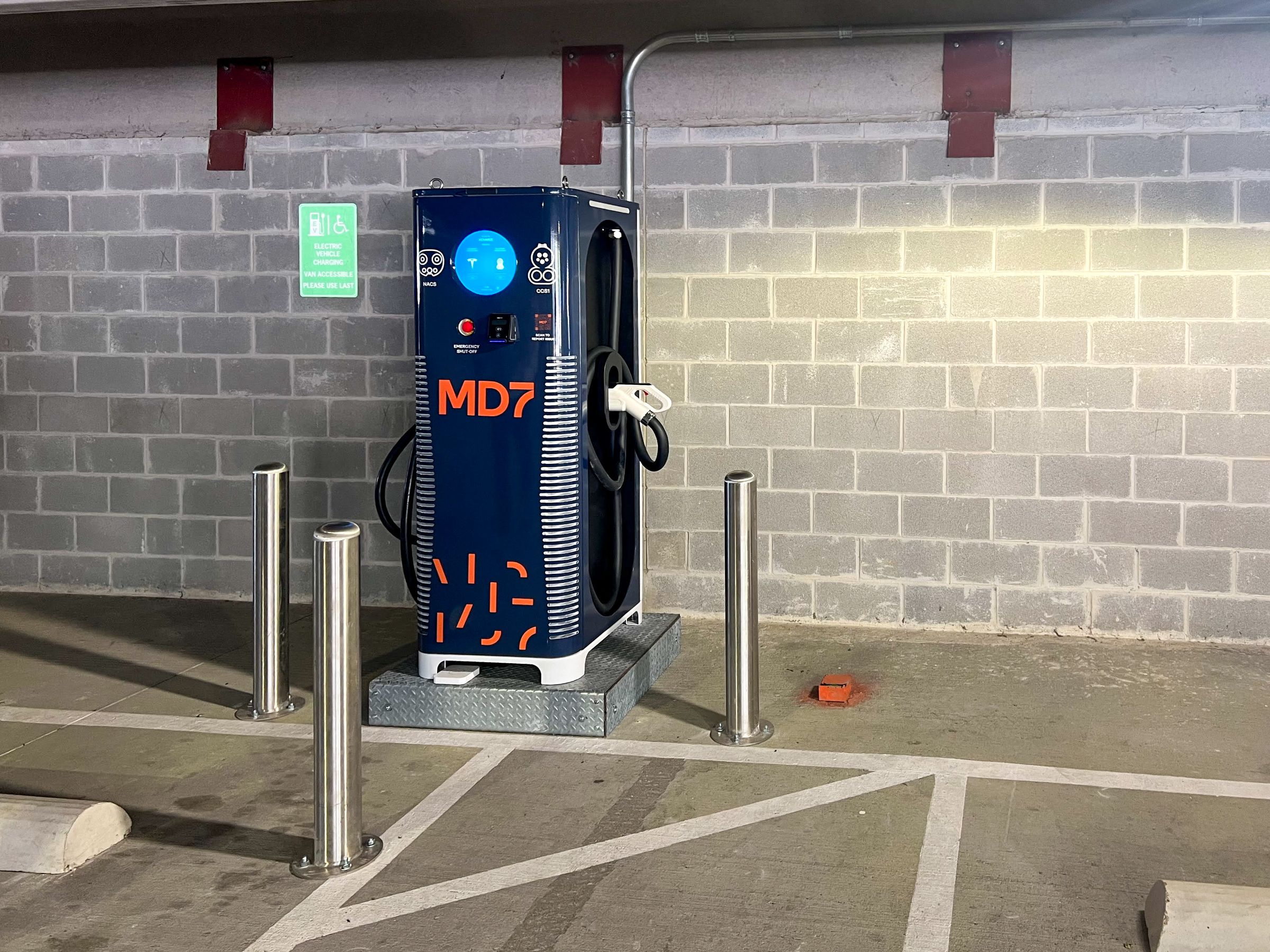Md7 Is Built for the Current Data Explosion
by Tom Leddo
Vice President of Business Development
Md7 – The Early Years
When Md7 was formed in 2003, the company had one asset – Michael Gianni’s monochrome BlackBerry. We may have had a couple of laptops too, but it wasn’t Michael’s hardware that was valuable, it was his contacts from many years in the industry that he stored in that (at the time) high-tech phone.
Michael used that phone to call a lot of people to talk to them about the future of the wireless industry and seek out ideas that could become the core of a future business. As he reached out to his wireless friends and acquaintances he began to hear two common themes emerge.
- OpEx was becoming just as important as CapEx as wireless executives were beginning to forecast the decline in explosive subscriber growth. It was Business 101 – the wireless industry would eventually flatten out as subscriber growth approached 100% penetration.
- Rent rolls for cell sites was going to become an increasing area of concern for operators. This was also Business 101 – if revenue growth flattens, operating margins become more crucial. And after payroll and backhaul, rent rolls were the largest OpEx line item in the network.
In 2004, Md7 got the opportunity to address these two issues when AT&T Wireless merged with Cingular. The new company had thousands of overlapping sites and we were contracted to renegotiate literally thousands of cell site leases. With private landlords located throughout the U.S., we simply could not follow the traditional site acquisition negotiation model of scheduling face-to-face meetings. So, we decided to handle everything over the phone. We had a lot of doubters because pretty much no one believed you could negotiate leases over the phone. But within days, the response to our efforts was so overwhelmingly successful that we kept maxing out our voicemail storage. We knew we were on to something.
With the subsequent Sprint and Nextel merger, we got a second bite of the apple. In 2005 and 2006, we began to refine our internal tracking software (which would eventually develop into the LiveTrack™ system) to enable us to manage literally thousands of negotiations from our central office in San Diego. We learned that a single negotiator could easily track and manage 150 negotiations and we began to truly master high-volume lease negotiations.
Oh yeah, and we were pretty good at keeping the rents down too.
Centralized Efficiency, Localized Know-How
After our early days in lease optimization, we transitioned into site upgrade amendments. The LTE growth boom had arrived and Md7 was ready for it. We proved that our newly developed processes and techniques, combined with well-trained lease negotiators, resulted in a better way to negotiate not just lease optimizations, but all cell site leases. We called this model “centralized leasing.”
By that time, Md7 had grown quite a bit. We traveled the country evangelizing the benefits of centralized leasing. Michael and Mark Christenson even took the message to Europe. But as any seasoned evangelist knows, not everyone believes the news is good – some do, some don’t. And no matter how much you believe it, not everyone will convert. Some people did, risking scrutiny within their own organizations to take a chance on Md7. Others politely passed on the idea.
Throughout the LTE build-out years, Md7 negotiated tens of thousands of lease amendments, including with private landlords, as well as processed site upgrade applications with each of the major tower companies. We showed that leasing can be scaled.
Md7 is now also scaling zoning and permitting services and all other site acquisition related services as well. We have discovered the balance between streamlining for large volume and utilizing a few people in the local market as needed (to maintain the local touch when needed, identify candidates and prepare SCIPS, close the final details with a local landlord, attend a hearing, or meet with municipal officials to get that final approval).
Wireless Infrastructure – The Future
A funny thing happened recently. I noticed that our phones are now ringing more than we have to dial out. Maybe all those frequent flier miles we earned meeting with our customers around the world is starting to pay off.
We have all seen the forecasts for exponential growth in the demand for wireless data. We all know that with that exponential growth comes a need for a new deployment model. Whether indoor or outdoor, macro or micro, we need to scale our ability to acquire and manage wireless real estate like nothing we have ever seen before.
The sheer volume of small cells being deployed over the next three to five years in order to meet capacity demand has created a new reality and carriers can’t use the same financial and deployment models for indoor and outdoor small cells that they’ve traditionally used with macro sites. They’re going to have to keep costs down and move faster. And all this work on small cells has to be performed in addition to growing the macro network.
The wireless infrastructure industry is going to be strong for the foreseeable future, but it is also going to have to be more creative than ever before.
Md7 has long grown past that initial, single, valuable BlackBerry in Michael Gianni’s pocket. Currently, the Md7 team is working for 25 different operators, across 4 continents, in 10 different languages, within 13 different countries. We now have lots of great employees, with their own list of contacts in their own iPhones and Galaxies — we even have one, hard-core loyal BlackBerry user.
The Md7 team is very excited about the current explosion in wireless infrastructure and is extremely confident that we are ready for the challenge.




